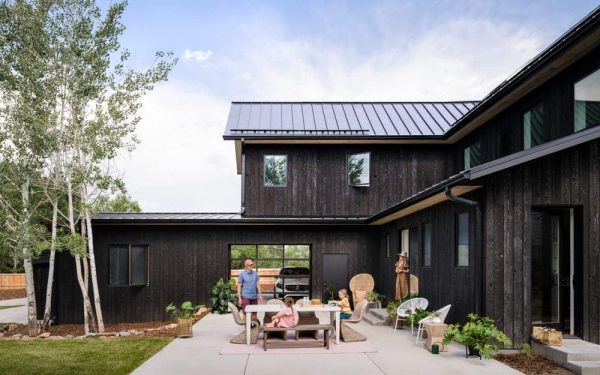
The prospect of a home renovation can be as daunting as it is exciting. You envision a space that embodies your unique style and preferences and enhances your comfort and lifestyle.
However, transforming that vision into reality can feel like navigating through a labyrinth, particularly for those embarking on this journey for the first time. You may also need to find a reliable lender to finance your renovation as they can be expensive, averaging at S$45,000.
That’s why we’re here to help! This comprehensive guide will provide a step-by-step walkthrough of a successful house renovation project, from conception to completion, ensuring you attain your dream space and enjoy the process.
7 Steps for a Successful Home Renovation Plan
Taking on a renovation project, especially a major home renovation, can be overwhelming. To ensure a smooth journey and a successful renovation, here are seven essential steps to follow:
1. Determine the design of your home.
The first step is to determine the design of your home, the style theme that will guide the minute details of your home, and the scope of work that is required. In this phase, you’ll delve into desired aesthetics, functionality, and overall ambience you want.
Tips:
- Gather renovation ideas from various sources such as interior design magazines, websites, and social media platforms like Pinterest and Instagram.
- You can also get design ideas by visiting model homes and showrooms to explore different styles, color schemes, materials, and architectural elements that resonate with you.
- Consider the needs of your household members to ensure the design caters to practicality and functionality.
- Take into account the existing architectural elements and layout of your home.
If you find this step challenging, consult a professional interior designer. They can help you provide valuable insights and guide you in making design choices that align with your goals and renovation budget.
2. Plan and budget for renovation works.
Here, you need to determine the total budget you require, a breakdown for each task and the estimates for associated costs. You must also decide whether your renovation will be done in phases or in a single go. Setting this will help you stay within your budget and control costs or help you determine if you need a renovation loan.
Tips:
- Evaluate the areas of your home that require renovation and prioritize based on importance and budget constraints.
- Look for cost-effective alternatives that don’t compromise on quality.
- Allocate a contingency fund. A general rule of thumb is to set aside around 10-20% of your total budget.
3. Choose between the contractor and the interior designer.
Choosing between a contractor and an interior designer depends on the scope and goals of your home renovation project. You can either engage a contractor to renovate different parts of your home or choose to go with an interior designer who will be your single point of contact throughout the home renovation process. You can find licensed contractors and interior designers from online renovation platforms like Qanvast and Renopedia.
Here are some factors to consider:
- The complexity of the project
Choose a contractor if the project involves structural changes and construction. Otherwise, an interior designer is the best fit if you only require guidance regarding space planning, aesthetics and design elements. - Budget constraints
Contractors often focus on cost management, sourcing materials, and adhering to project schedules. Interior designers, on the other hand, guide sourcing unique elements and cost-effective design choices.
Nonetheless, you can also prefer both parties to work and collaborate. This preference could ensure that the technical aspects align with your design requirements.
4. Plan the renovation timeline with your interior designer or contractor.
Plan the next one to two months of renovation work and where each segment fits into the schedule. Generally, contractors ensure that they strictly adhere to renovation guidelines and are completed on time. You can find the HDB renovation guidelines here.
The general framework for creating a renovation timeline includes the following:
- Initial consultation
- Site visit and assessment
- Design development
- Obtaining permits
- Materials procurement
- Construction
- Finishing touches
- Final inspection

5. Shop for materials, furniture, appliances and lighting.
After planning the renovation timeline, you can start shopping for materials in conjunction with your renovation timeline to reduce any potential risk for delays. You can buy materials from reliable construction supply shops in Singapore like SunHee, check reliable renovation platforms like Renopedia, or ask your contractor for other reliable suppliers.
Here’s a step-by-step guide to help you navigate through this stage:
- Create a detailed shopping list.
Break it into categories such as materials, furniture, appliances, and lighting fixtures. - Compare prices and quality.
Check out different suppliers and retailers to compare prices, quality, and available options. - Compare quotes and make purchases.
Before purchasing, obtain quotes from various suppliers or retailers, and compare their prices, warranties, and delivery options. - Keep Track of Receipts.
Keep all receipts or documents related to your purchases, including warranties, installation instructions, and contact information for the suppliers or retailers for future reference, returns, or any necessary follow-up.
6. Monitor renovation progress.
This step is essential to ensure the project is carried out according to plan and schedule. Make regular checks on your interior designer or contractor to ensure your renovation works smoothly without any significant surprises.
Tips:
- Maintain regular communication with your contractor or interior designer. You can do this through email, phone calls, on-site or personal meetings.
- Document the progress. Take photos or videos during each site visit to document the progress and issues.
- Address concerns promptly. Communicate issues immediately to your contractor and discuss solutions to resolve the problems effectively.
7. Post-renovation home setup.
Once the renovation is complete, it’s time to focus on the final touches. Clean the area to remove dust and debris before moving furniture and appliances. Moreover, plan the layout and placement of your furniture based on the design and functionality of the space. Enjoy!
Tips:
- Add decorative elements and accessories to enhance the visual appeal of your renovated space.
- Select pieces that reflect your unique style and create a welcoming atmosphere.
- Consider implementing storage solutions like shelves and cabinets to maximize space and keep your belongings tidy.
Closing
A home renovation project can be a transformative experience for anyone who dreams of creating a place that reflects your style and enhances your lifestyle. Yet, every home renovation project is unique, and some adjustments may be necessary along the way. But with careful planning and monitoring, you can build your dream home confidently!
- Planning is crucial, so plan and define your renovation goals and budget before diving into the project.
- Select reputable contractors, interior designers, and other professionals with experience and expertise in home renovations.
- Maintain open and transparent communication with all stakeholders involved in the project.








